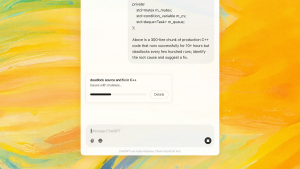Facebook Co-Founder’s GTD Style Startup Now Open for Free Sign-Ups
![]() Facebook co-founder Dustin Moskovitz’s startup Asana has been one of the most anticipated startups of the past few years. And now you can finally sign-up for a free account.
Facebook co-founder Dustin Moskovitz’s startup Asana has been one of the most anticipated startups of the past few years. And now you can finally sign-up for a free account.
Asana was founded by Moskovitz and ex-Googler Justin Rosenstein and has received over $10 million in funding from Andreessen Horowitz and Benchmark Capital and individual investors like Ron Conway, Peter Thiel, Mitch Kapor and Sean Parker. It’s been in private beta and in February it had 1,200 businesses waiting to sign-up.
Asana is one of many companies seeking to radically change the way people work. The service is highly influenced by the “Getting Things Done” (GTD) methodology created by David Allen. Asana is aimed at both the enterprise and individual users. It can be used as a team task management tool, or simply as a personal tool.
Asana is trying to solve two common problems. One of the biggest difficulties in implementing GTD is the need to use the enterprise project and task management that your employer makes standard. There’s a tendency for GTD tools to focus on the individual instead of groups.
On the other hand, one of the biggest problems with enterprise productivity software is adoption. By making Asana a tool that individuals can use without depending on the rest of their team adopting it, much like all those other individualistic GTD apps, Asana isn’t depending on enterprise-wide deployment. Asana is free for groups up to 30. It’s the classic enterprise freemium model that many enterprise 2.0 companies are now following.
When Moskovitz and Rosenstein demoed Asana in February, they noted that the goal of the Asana team is to make the Web application as fast as using a text editor on your desktop. To make that happen, the team spent a lot of time developing its own programming language Lunascript. They ultimately switched to JavaScript, however, and ceased development of the Lunascript language because it was slowing down development of the actual Asana product. However, the team has built its own framework called Luna that it still uses.
The company hopes to turn Asana and Luna into not just a task management tool, but a platform for enterprise applications. “we’re building it on a general structured data management platform, which we’ll leverage first to launch more applications, and ultimately to allow users and third-party developers to create custom schemas, workflows, and interfaces, all integrated with a single common data model,” Rosenstein wrote on Quora last year.
Services Angle
What’s really interesting and problematic is Luna and the Asana platform. It seems clear that Asana would have the biggest enterprise uptake if were offered through enterprise app store like the Google Apps Marketplace, Salesforce.com AppXChange and the Jive Apps Market. But Asana is focusing on building its own platform. Many companies are working to offer both a best of breed application that can be sold on other platforms while simultaneously offering their own platform for building and selling apps. Maintaining that balance, and living up to the huge expectations for the company, will be key.
A message from John Furrier, co-founder of SiliconANGLE:
Your vote of support is important to us and it helps us keep the content FREE.
One click below supports our mission to provide free, deep, and relevant content.
Join our community on YouTube
Join the community that includes more than 15,000 #CubeAlumni experts, including Amazon.com CEO Andy Jassy, Dell Technologies founder and CEO Michael Dell, Intel CEO Pat Gelsinger, and many more luminaries and experts.
THANK YOU















